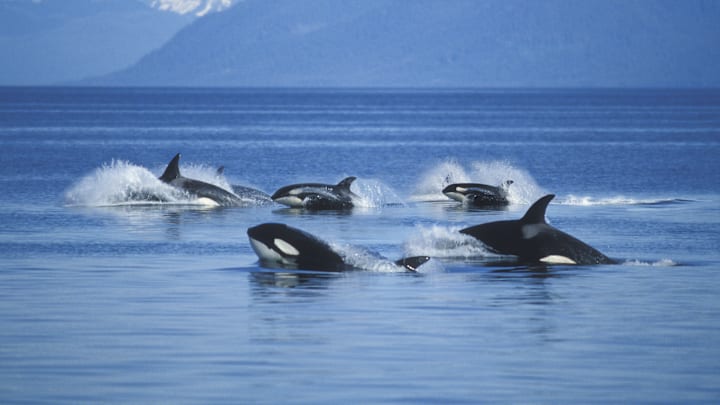Despite their menacing names, killer whales are highly social, playful creatures that form special bonds within their pods. The marine mammals have been known to care for their sick or injured peers and even adopt orphaned calves. Now, researchers from the UK and the U.S. are reporting a new type of social interaction in orcas that involves aquatic plants.
A new study published in the journal Current Biology details how some orcas are using kelp to give each other apparent massages. A whale will rip off a piece of seaweed and press it against a peer or maternal figure, allowing the pair to rub the plant between them. The scientists officially dubbed the phenomenon allokelping, a term that combines the prefix allo-, meaning atypical, and the word kelping, a common behavior in which killer whales rub themselves against seaweed for skin exfoliation or for play. In short, allokelping is a different, more social way of kelping.
The study authors observed the practice in Southern Resident killer whales while sailing in the Salish Sea off the Pacific Northwest coast in 2024. Using high-definition cameras, they spotted 30 instances of allokelping in orcas of all ages and sexes over 12 days.
The motivation for behavior isn’t clear, but the scientists have their theories. As with solitary kelping, allokelping may be part of an orca’s skincare routine. Professor Darren Croft, co-author of the study and executive director of the Center for Whale Research, suggests that the behavior may be a form of grooming. “Brown algaes like bull kelp also have antibacterial and anti-inflammatory properties that may provide further benefits to the whales,” he explained in a press release. It may also help strengthen social bonds. Croft elaborated further, saying that “killer whales often make contact with other members of their group—touching with their bodies and fins—but using kelp like this might enhance this experience.”
The experts behind the study acknowledge that further research is necessary to determine the reasons for allokelping. It appears to be a unique cultural behavior among Southern Resident killer whales.
Read More About Underwater Animals:
